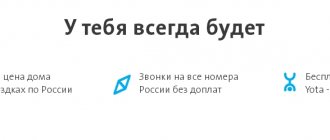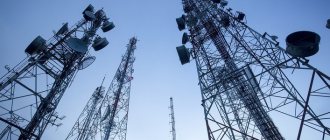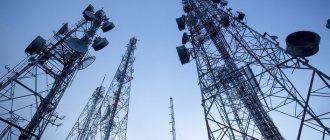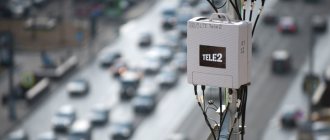If you know that the Iota network exists but are not sure exactly where it is, we offer you our resource. This is the most correct and working Yota coverage map. The simplest convenience and assistance in comparison with iota internet coverage. The map will help you find out the Yota coverage plan. And also, do not forget that with it you can find towers and coverage radius of Yota lte in your region. It is easy to accurately compare with 4G, 3G, 2G MTS, Megafon, Tele2, Beeline. To understand and understand our, albeit simple, service, we advise you to read this manual to the end:
Yota coverage map
We propose to analyze all the capabilities of the coverage map one by one. After studying the further instructions, you can easily use it and find out all the necessary information.
- First of all, open the interactive map at the link: https://www.yota.ru/map .
- You can switch card categories at the top of the corresponding window, as shown in the screenshot.
- Coverage map:
- For convenience, you can use the search for a specific location. The system can process the name of a city, street, district, exact address, metro, and even a shopping center. Immediately after entering, a drop-down list of available options will appear;
- The coverage filter allows you to specify suitable types of communications whose coverage area you want to display;
- Points of sale:
- As in the previous case, search is available by cities, districts, streets, addresses, metro stations, and so on;
- Not all Yota sales offices provide all available services. They are divided into categories. It is necessary to indicate suitable opportunities to find the most suitable point of sale. The following options are available: Registration of new SIM cards;
- Business customer service;
- Switching to Yota with your phone number from another operator;
- Adding funds to the balance sheet;
- Submission of various applications;
- Communication with a consultant in sign language;
- Replacement/diagnosis of routers or other devices from Yota.
- You can display all salons as a list. The exact address, operating hours and supported services will be displayed;
- In addition, classic actions for managing the interactive map are available. This includes going into full screen mode, zooming, and finding your location (if your device has GPS).
It is important to note that coverage is calculated by special algorithms. It does not take into account weather conditions, interference from buildings and other factors. Therefore, the result can be considered only approximate.
Whose towers does Yota use?
To understand the question of whose towers Yota uses, you need to have a brief understanding of the provider’s features. This is a Russian company, a federal operator operating on the combined network of Megafon and Scartel.
The main activity is the provision of 4G Internet. The provider first appeared in St. Petersburg in 2006, and a year later it became available in Moscow. After merging with Megafon on April 23, 2014, the company entered the federal level, and by the end of 2014, Scartel’s coverage grew to 28 cities. As for the Yota product, the project was launched only in May 2016. A new tariff line and special offers for subscribers immediately appeared.
Taking this into account, we can say which towers Yota operates on. Legally, the operators Yota and Megafon are the same, so the former uses the equipment of a larger provider. However, their functions are slightly different. If Megafon is a regular mobile operator, then Yota is a virtual one, providing primarily access to the mobile Internet.
When considering the question of what towers Yota uses, it is also worth noting that it has its own 4G equipment in large cities. With its help, it is possible to strengthen the signal and improve the quality of the Internet in certain regions.
Differences in coverage areas
Today the following types of communications are displayed on the interactive map:
- Voice communication and 2G Internet. The most basic communication that allows you to make outgoing calls, as well as receive calls from other subscribers. Internet is also available at minimum speed (around 14.4 Kbps). Displayed in orange on the map;
- 3G Internet. A more modern type of communication. Still actively used on some phones, but inferior to 4G. Speed reaches 42.2 Mbit per second. Shown in light blue on the map;
- 4G Internet. An advanced communication standard, the download speed of which can reach 700 Mbit per second. It is shown in dark blue on the map.
Each subsequent connection includes the capabilities of the previous one.
How to find the nearest tower
Many users are interested in the location of Yota towers on the map, which allows them to determine the strength and quality of the signal even before connecting to a particular tariff. As noted, this is a young operator who uses Megafon equipment. At the same time, the available equipment does not cover the entire territory of the Russian Federation. The situation looks best in large cities, and worse in rural areas.
To see Yota towers on the map, you can look at the link yota.ru/coverage. Here is the actual coverage. But the coordinates of the equipment used by the provider are not indicated. The complete and exact location of Iota towers is available only to the operator and is used for maintenance. Such information is not made publicly available to avoid damage to the equipment by third parties.
If desired, subscribers can find out the location of ETA towers on the map. To do this, you can use the following alternative sources:
- Radio amateur forums in regions where coordinates are often provided. But you will have to spend a lot of time searching for the necessary information.
- Special mobile applications. There are a number of applications in the Google Play store that allow you to find the location of the equipment that your operator uses. For example, the Cell Towers Locator program from Vitaly V allows you to approximately locate Yota 4G towers on the map. Using the application, you can view cellular IDs, signal strength, location, etc.
An equally popular application is Netmonitor, with which you can monitor your network and find the equipment your company uses.
There is a more complicated way to find the nearest Iota cell tower - do it indirectly. The general algorithm of actions is as follows:
- Follow the link yota.ru/coverage and study the current coverage. Using this information, tentative conclusions can be made about the location of the equipment used by the operator.
- Study the terrain. For further analysis, you will need the airlink.ubnt.com service, with which you can determine the terrain features. To use it you must go through the registration procedure. To carry out the necessary steps, you need to go to the site and enter certain coordinates.
- Correct the data. This may require the geo.minsvyaz.ru service. In it, enter the name of the locality, scale the map and look at the coverage areas. Determine approximately where the Iota towers are located on the map of the Moscow region or other regions.
- Explore the area using Google Maps. Enter the approximate address that you were able to determine and look at the photos. After finding, record the data in the form of coordinates.
In this way you can find out what equipment the provider uses and where it is located. But we note that this work can take a lot of time.
What if my smartphone doesn’t support Band 3 or Band 7?
Almost all current smartphone models that have been certified for Russia and Europe support both frequency ranges. However, even if you have an older model or a smartphone intended for a different market, most often LTE will work in at least one of the frequency bands. Manufacturers of mobile devices are trying to simultaneously support as many “bands” of fourth-generation networks as possible so that smartphones in roaming are not limited in their use of the mobile Internet. The only exceptions are other types of mobile communications, for example, some operators in the USA and Japan, where the CDMA communication standard is used.
What is LTE 1800 and LTE 2600?
LTE networks in different countries operate at different frequencies, and most often several bands are used within a country. In Russia and Europe, most often these are band 3 (LTE 1800), band 7 (LTE 2600), band 20 and band 38. The difference between them is not only in the name and frequency, the “band” used is one of the factors determining the data transfer speed . For example, in the case of Band 3, for a 10 MHz channel, the data transfer rate will be 75 Mbit/s, and the maximum channel width of 40 MHz in the frequency range of 2600 MHz (Band 7) will provide up to 300 Mbit/s. In addition, LTE-Advanced technology implies the ability to combine frequency ranges to speed up data transfer. In this case, the speeds of Band 3 and Band 7 are summed up.
Why is it important to know the location of the towers?
The company's equipment is located unevenly. Equipment providing 4G communications is located in large cities, while the rest are located in different regions of the Russian Federation. On the coverage map yota.ru/coverage you can see different zones and draw appropriate conclusions.
Knowing which towers Iota operates on and where they are located can be useful in the following cases:
- Connecting to an operator and wanting to clarify coverage for your region of residence.
- Intention to buy a dacha in an ecologically clean area and find out if there is good coverage here.
- Search for missing people when portable base stations may be required.
- Hiking trip to understand which direction to go.
- Installing and configuring the router to determine the correct antenna position.
- Determination of radio interference, which is especially important for radio amateurs.
Of course, the location of such equipment is important to the operator who uses and maintains it.
Now you know whose towers Yota operates on and how to find them. In the comments, share your information about the location of the points and the features of their search.
Summing up
Pros:
- Fine-tuning the tariff;
- Convenient connection;
- Mobile application with built-in chat.
Minuses:
- Interruptions in Internet connection (only on the periphery);
- It's quite difficult to reach customer support.
Megaphone
- Stable Internet;
- Excellent level of service in branded salons;
- Multifunctional application;
- Availability of bonus points;
- Prompt technical support.
Minuses
- Expensive tariffs;
- Lack of ability to choose the apps you need for unlimited access.
Fluctuations maximum
Changes in Yota power, the maximum db signal is measured using test programs or instruments, may cause the connection to break. According to information from https://www.yota77.ru/map.htm, the signal level in the Moscow region fluctuates in the range of 18-22 dB. The maximum value was noted at 29 dB.
In areas with low signal strength (0-2 dB), to increase it qualitatively (up to 20 dB), you can purchase an amplification antenna with appropriate indicators and a built-in Yota modem.
Tariffs from Megafon
Line of tariff plans “Turn on!” has long gained popularity among subscribers and has become in demand.
Below we will look in detail at what the operator offers us:
- “Communicate” is one of the most balanced options in the line. The cost of the service per month is six hundred rubles. This includes a package for five hundred minutes to all numbers in Russia, 12 gigabytes of mobile traffic, unlimited mobile television. This tariff also includes unlimited use of popular instant messengers and social networks. The advantage of this tariff is that it is valid throughout the Russian Federation.
- “Look” - this tariff plan was developed with a focus on those subscribers who, in addition to communication, like to enjoy video content. The monthly tariff costs 900 rubles. The price includes: 16 GB, unlimited YouTube viewing and free use of social networks and instant messengers. 1200 minutes are allocated for voice communication.
- “Speak” is another advantageous offer from the “Turn on!” line. The monthly fee is five hundred rubles. What does this include: 600 minutes, 3 gigabytes, unlimited for instant messengers. A package of mobile television channels can be connected for an additional fee if necessary. This tariff plan operates throughout the Russian Federation and is designed for those subscribers who have little interest in Internet resources.
- “Listen” - this option is optimal for music lovers. The monthly fee is three hundred rubles, which includes 250 minutes for local calls, 6 gigabytes of mobile traffic. You can use popular music services.
- “Write” - the tariff plan is designed for subscribers who need SMS. Monthly fee 350 rub. this includes 350 minutes for local calls, two hundred SMS in the home region, plus the use of instant messengers.
- “Premium” is a comprehensive tariff plan, which is distinguished by a large number of services: 5 thousand minutes for calls within the Russian Federation, use of instant messengers, music services, 20 gigabytes of regular traffic. The subscription fee is impressive and amounts to 3 thousand rubles monthly.
Mobile applications
Both operators provide convenient and functional solutions. We prepared a review of the proprietary application from Yota earlier. A special feature of Megafon’s service is the presence of a points system, which are awarded depending on communication costs. However, in order to fully appreciate the advantages of their use, they can only be assessed after several months of stable use.
Both applications allow you to:
- Top up your balance;
- Track your balance;
- Change the tariff and find out your own number.
Signal in different regions of the country
If you look at the Yota coverage area in detail, you can see that in the northern and southern parts of the country the connection is partially present. The operator offers the use of 4G Internet to subscribers living in:
- Murmansk;
- St. Petersburg;
- Krasnodar;
- Sochi;
- Rostov-on-Don.
4G Yota coverage is available in the resort city of Sochi, so vacationers will not be left without a high-quality network connection. In cities of the Far East, as well as nearby areas, subscribers can use voice communications.
In the northwest and central regions, the map shows good levels of 2G connectivity. Only in some areas the network is completely absent. Standard 3G connections are less common; LTE cell phone towers are located mainly in the southern and western districts.
Wider step
The Yota repeater map suggests that the operator’s coverage area is steadily growing.
This year, the number of LTE network stations has increased by more than half (60%). The main indicators for the operator were made by representative offices in Irkutsk and Khabarovsk (the number of 4G repeaters there more than doubled). Good results were recorded in the North-West of the country: Leningrad and Vologda regions - the overall figure is 50%.
The launch of new LTE network base stations has significantly increased Yota's 4G coverage area and reduced the load on existing towers. The operator is systematically increasing its presence in the high-speed Internet market.
Some details
The Yota operator, whose tower map was drawn up without paying attention to external realities, warns its subscribers that:
- There may not be an Internet connection due to the considerable distance to the base station;
- The signal level is directly affected by the height of the external antenna mounting point:
- The speed of receiving/transmitting packet data will be significantly reduced under harsh operating conditions of the base station and high building density.











